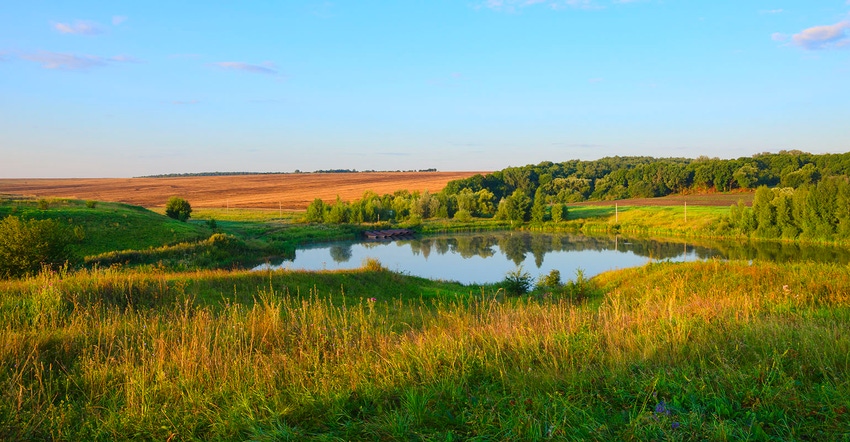
EPA’s new definition of Waters of the United States (WOTUS) is still not published due to the government shutdown. A “ditch” or “tributary” have been defined in earlier blogs, here. This week I will attempt to set forth what EPA defines to be a “lake or pond” on your property and when a lake or pond is not considered to be a WOTUS.
EPA’s 253-page proposal cites 33 C.F.R. section 328.3 to declare that any lakes or ponds satisfying two sections of this regulation will be a WOTUS. In summary, any lake or pond susceptable to use in interstate or foreign commerce or subject to the ebb and flow of tide will be considered a lake or water under WOTUS.
Second, EPA says, “…lakes and ponds that contribute perennial or intermittent flow…in a typical year…would also be considered waters of the United States.” To interpret this section a landowner must also go back to consider the definitions set forth in 33 CFR Section 328.3. To further confuse a farmer or rancher, EPA and the Corps “…propose that lakes and ponds flooded by an (a)(1) – (5) water in a typical year would be waters of the United States. These lakes and ponds would receive flood waters from (a)(1) – (5) waters via overtopping in a typical year.”
EPA and the Corps claim they want to include lakes and ponds as WOTUS and look at such entities within the ordinary means of the term. The agencies claim to be focusing on lakes or ponds’ contribution of flow and “connection” to traditional navigable waters.
EPA and the Corps are definitely including lakes and ponds which contribute “perennial or intermittent flow” to traditional navigable waters.
Some good news
There is good news for farmers and ranchers in the Trump administration proposal.
The agencies state “A mere hydrologic connection from a non-navigable, isolated, intrastate lake or pond… may be insufficient to establish jurisdiction under the proposed rule.”
The proposed rule supports the statement by describing flooding occurring once every 100 years into a WOTUS would not be jurisdictional or under the agencies’ control.
To make it clear, the agencies indicate a lake or pond would need to be flooded from a jurisdictional WOTUS during a typical year.
In a reversal of the Obama EPA rule, the Trump Administration proposal makes it clear “…ecological connections between physically separated lakes and ponds and otherwise jurisdictional waters cannot be used to assert jurisdiction…” The agencies make clear that “…lakes and ponds which contribute ephemeral flow, such as through dry washes and arroyos that lack the perennial or intermittent flow regime necessary to satisfy the conditions of jurisdictional lakes and ponds under this proposed rule, would not be waters of the United States.”
The agencies caution that such water resources of the States might be addressed by States or Indian tribes.
The agencies go on to describe what is a lake or pond in their opinion. Ponds are described as manmade features and can be used for agricultural and other purposes. The discussion regarding lakes and ponds addresses those entities which do not have a natural outflow and lose water solely by evaporation and underground seepage.
The agencies suggest a landowner owning such a body of water determine if it is represented on a U.S. Geological Survey (USGS) topographic map. The agencies believe these maps will help a landowner determine whether his pond or lake is a WOTUS.
When the EPA and Corps proposed definition of WOTUS is finally published, a comment period will be included. Comment is being sought on what type of flooding might cause a lake or pond to come under EPA and/or the Corps’ jurisdiction. This issue, like the other two previously described in blogs, needs to be addressed by farmers and ranchers.
The opinions of the author are not necessarily those of Farm Futures or Farm Progress.
About the Author(s)
You May Also Like




